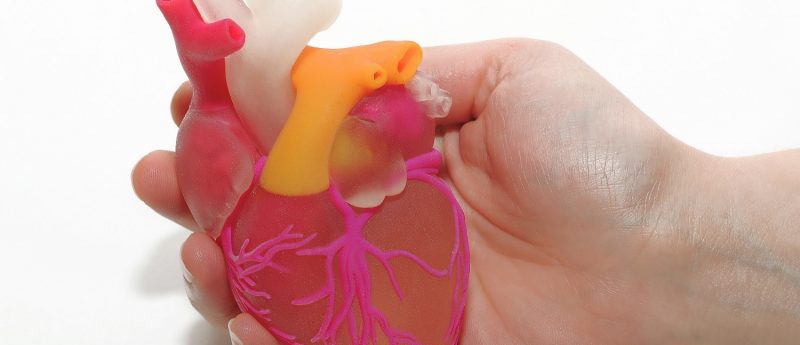The advantages of bioprinting for organoid production: an interview with Yu Shrike Zhang

In this interview, Yu Shrike Zhang discusses the challenges and advantages of applying bioprinting to manufacturing biomimetic tissue models.

Yu Shrike Zhang
Yu Shrike Zhang received a B.Eng. in Biomedical Engineering from Southeast University (Nanjing, China) before obtaining an MSc in Biomedical Engineering from Washington University in St. Louis (MO, USA) and a PhD in Biomedical Engineering at Georgia Institute of Technology and Emory University School of Medicine (GA, USA). He completed postdoctoral training at Brigham and Women’s Hospital, Harvard Medical School, Harvard-MIT Division of Health Sciences and Technologies, and Wyss Institute for Biologically Inspired Engineering (MA, USA). Zhang currently holds a faculty position of Instructor of Medicine and Associate Bioengineer at Brigham and Women’s Hospital (Harvard Medical School) and his research interests include organ-on-a-chip, 3D bioprinting, biomaterials, tissue engineering and regenerative medicine, biomedical imaging, biosensing, and nanomedicine. He is Editor-in-Chief for Microphysiological Systems, on the Editorial Board of Bioprinting and on the Advisory Panel of Nanotechnology.
Please introduce yourself and your institution.
Last year, my group did a lot of work centered on generating 3D tissue models for precision medicine applications using a combination of different technologies, for example tissue engineering, bioprinting, microfabrication and microfluidics. We are building integrated tissue models for screening pharmaceutical compounds in a more accurate way than conventional planar cell cultures and animal models.
Last year, you published a paper on engineering challenges in microphysiological systems in Future Science OA. Can you explain how this research came about?
Not only our lab but the whole field has been involved in developing a few aspects that are in strong need for improving the designs and functions of the microphysiological systems. For example, we now have the capacity to include stem cells-derived cells in organ-on-a-chip technology and tissue models for achieving in situ monitoring of donor responses. In addition, advances in biofabrication such as bioprinting and microfluidics can make these models more realistic and human-like, improving the accuracy of these tissue models in vitro. Finally, sensor integration would allow us to monitor organoid responses to drugs at ease.
Read more about Yu Shrike Zhang and organoids
Last year, you also published an editorial on 3DMedNet on bioprinting. Do you still believe it is the future of medicine and organ-on-a-chip manufacture?
I wouldn’t say it’s the only future but it has potential for engineering organs-on-chips. With conventional methods, you can’t achieve higher-throughput manufacturing of complex tissues and organs easily — it’s very complicated. If you consider conventional scaffolding, layer-by-layer deposition or micropatterning techniques, it’s very difficult to mold something that’s very similar to the in vivo structure.
Bioprinting provides the capacity for producing these organ models in a higher-throughput manner by maintaining the reproducibility of organ models across different batches. This will be important when developing future models for drug screening. You want to ensure that every single aspect of the model has the same parameters or properties so you can have useful results for a screening. Bioprinting also gives you unprecedented precision in building tissue models with complex architectures. It can also be applied to modelling based on an image from a human patient. This allows you to very nicely replicate how the human tissue and organs are structured in vitro.
How can new manufacturing techniques and technologies improve the life span and functionality of microphysiological systems?
This is obvious in terms of functionality. You can visualize the three dimensionality of how the tissue and cells are arranged in the body which makes them functional together. You can also print a structure that contains different materials and different cell types, allowing you to very nicely model cell interactions in space which cannot easily be done using conventional techniques.
Where you have improved the functionality of an organoid, you would imagine it would probably have a longer life span. The whole field has been thinking about how to combine these organoids with microfluidic devices, which could also increase their life span. You could bioprint organoids then combine them with a microfluidic device controlling media flow. With the media and nutrient transport, and biophysical cues, the whole organoid is in a more biomimetic, relevant environment and will likely last longer.
What are the challenges of integrating more components with organs-on-chips eg bioreactors?
If you want to make a system very complicated, it can become less effective because you have to make sure every single aspect works. Where you have single components, everything is simple and you can easily make it all work (relatively speaking). Integrating work is more challenging.
If you’re thinking about translating the model to everyday use, then there’s a huge challenge in ergonomics. You want to make sure whatever models you make with high complexity can be easily learned and used by other users who may not be experts.
How close are we to existing engineered models replacing in vivo models? What more is required to get there?
This is a very tricky question and I don’t have a good answer. The whole organ-on-chip field is still new; it’s been around for 10-15 years. I don’t see a model replacing conventional in vivo models yet. In vivo models are so complicated that you can never really recapitulate all their functions in vitro. However, organoids for a lot of applications related to drug screening don’t need to recapitulate the whole organ function, only a certain aspect of the organ function that the drug could affect.
I think there is still some way to go but as I talk to different people I think one of the key problems for organ-on-chip technology is a lack of validation of the systems. People have been trying to develop different engineered systems for different premises but I don’t see many of them being validated against models such as in vivo models. I think there is a gap; people should compare them to conventional models and clinical data so we can ensure that the models being made are actually giving you the right results.
What are your predictions for the development of engineering models in the future?
Validation is one of the most important things right now but along with validation, there’s also a need for standardization. The NIH has given out grants in the US to establish Tissue Chip Testing Centers that will test chips from different partners to validate and enable conversations on standardization. We need to ask how we standardize different designs so we can standardize prediction power from the chips and bring them into the future.